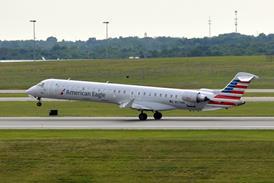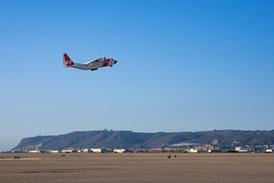MARK PILLING
Volga-Dnepr Airlines has provided ample proof of its capabilities as a leading airlifter of super-heavy and outsized cargo by bringing the Khrunichev Space Center¹s Baikal booster to Paris from Moscow's Sheremetyevo Airport in one of its Antonov An-124-100s.
The carrier brought the space launch vehicle - a reusable booster with combined jet engine and rocket propulsion systems - to France for its first appearance at the show. It has a long-term partnership with the Khrunichev Space Center to offer a full package of delivering and launching satellites into orbit, which begins with Volga-Dnepr transporting payloads and launcher hardware from their production site to the launch site.
Volga-Dnepr operates nine An-124s - out of the 21 manufactured to date - and its strategy is to add one or two to its fleet each year, says general director Alexey Isaikin. It currently has two aircraft on order and both are in production, with the first in the final stages of completion by Antonov for delivery in 2002. Volga-Dnepr is planning to strike a loan deal with the World Bank's International Finance Corporation to finance these two aircraft, says Isaikin.
Volga-Dnepr is at Paris on its own after breaking up with the UK's Heavylift Cargo Airlines, its commercial partner for 10 years, in February. The separation came because the joint venture did not allow it to invest in extra aircraft and upgrading existing aircraft. Sales have fallen, but with its newly formed marketing and sales network including offices in the UK and US, Isaikin hopes to sustain the performance of last year. Its cargo volume increased by 19% compared with 1999, revenues reached $125 million on the An-124 operation, and it accumulated 8,765 flight hours.
Aerospace has become one of Volga-Dnepr's most important markets, making up 30% of its business. It is particularly busy in the space field, delivering one out of every three satellites to their launch sites.
In the future the carrier may go to the international private capital market to raise funds, possibly to finance Western-built aircraft. It would only make the move to Western types if it could operate a scheduled cargo network in highly developed markets.
Source: Flight Daily News























